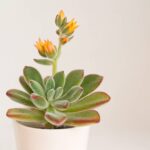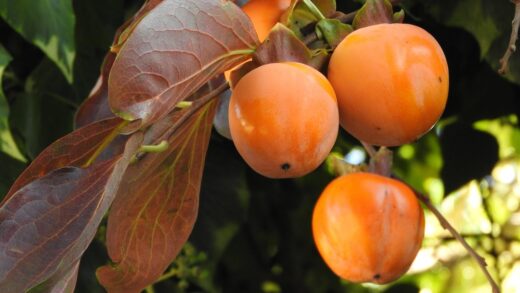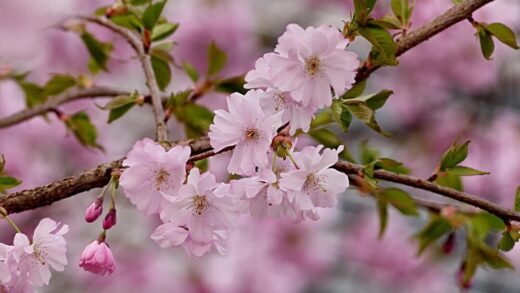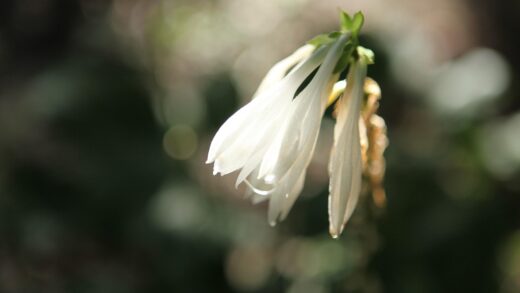The plush plant, known for its captivating velvety leaves and vibrant rosette form, is a delightful succulent that can bring a touch of unique texture and color to any collection. Native to the rocky outcrops of Mexico, this plant has adapted to thrive in conditions that mimic its natural sun-drenched and arid habitat. Understanding its fundamental requirements is the first step towards cultivating a healthy and visually striking specimen. Successful cultivation hinges on a careful balance of light, water, and soil, creating an environment where this charming succulent can not only survive but truly flourish, rewarding its caretaker with its fuzzy foliage and, eventually, its stunning, bright orange and yellow flowers.
One of the most critical aspects of caring for the plush plant is providing it with an adequate amount of light, a factor that directly influences its coloration and compact growth habit. This succulent craves bright, indirect sunlight for the majority of the day, which helps to maintain the vibrant red or orange tipping on its leaves, a signature characteristic of the species. An east-facing window is often ideal, providing gentle morning sun without the harsh intensity of the afternoon rays. If grown outdoors, a location with partial shade during the hottest part of the day will prevent the delicate, fuzzy leaves from scorching, which can cause permanent damage and detract from the plant’s overall aesthetic appeal.
Proper soil composition is another cornerstone of successful plush plant care, as this succulent is particularly susceptible to root rot in overly moist conditions. The ideal potting medium should be exceptionally well-draining, allowing water to pass through quickly and preventing the roots from sitting in stagnant moisture. A commercially available cactus or succulent mix is a suitable starting point, but it can be further improved by amending it with inorganic materials such as perlite, pumice, or coarse sand. This creates a more porous and airy substrate that closely replicates the gritty, rocky soils of its native environment, promoting healthy root development and preventing a host of water-related issues that can be detrimental to the plant’s health.
The overall environment, including temperature and humidity, also plays a significant role in the well-being of the plush plant, which prefers conditions that are warm and dry. It thrives in average household temperatures, generally between 18 and 24 degrees Celsius, but it is not particularly frost-tolerant and must be protected from freezing temperatures. Low humidity levels are ideal, making it well-suited for indoor growing in most climates without the need for additional humidifiers. Good air circulation is also beneficial, as it helps to prevent the development of fungal diseases on the densely packed, fuzzy leaves, ensuring the plant remains healthy and vigorous throughout its growing season.
General maintenance practices
Regular maintenance, while not overly demanding, is essential for keeping your plush plant looking its best and encouraging healthy growth over the long term. This includes periodically removing any dead or dried-out lower leaves from the base of the rosette, which can improve air circulation and reduce the risk of pests hiding in the decaying organic matter. Gently twisting the leaves off the stem is usually sufficient, but a clean, sharp pair of scissors or pruning shears can also be used for a more precise removal. This simple act of grooming not only enhances the plant’s appearance but also directs its energy towards producing new, healthy growth rather than sustaining dying foliage.
More articles on this topic
Inspecting the plant regularly for any signs of distress or infestation is a crucial preventative measure that can save a great deal of trouble later on. Carefully examine the leaves, both top and bottom, as well as the stem and the soil surface for any unusual spots, webbing, or the presence of common succulent pests such as mealybugs or spider mites. Early detection allows for prompt and effective treatment, often with simple, non-invasive methods like a cotton swab dipped in rubbing alcohol for mealybugs or a strong spray of water for spider mites. A proactive approach to pest management is far more effective than trying to control a full-blown infestation that has had time to establish itself.
Repotting is another important aspect of long-term care, although the plush plant prefers to be slightly root-bound and does not require frequent repotting. Generally, it is best to repot every two to three years, or when you notice that the plant has outgrown its current container and the roots are becoming compacted. The best time to repot is in the spring, at the beginning of the active growing season, which allows the plant to recover quickly and establish itself in its new environment. Choose a pot that is only slightly larger than the previous one, with adequate drainage holes, to avoid providing too much excess soil that can retain moisture and lead to root rot.
Over time, the plush plant may become leggy, with a long, bare stem and a rosette of leaves at the top, especially if it is not receiving enough light. This is a natural growth habit for many Echeveria species, but it can be managed to maintain a more compact and aesthetically pleasing shape. Pruning the top rosette and allowing it to re-root can rejuvenate the plant and create a fuller appearance. The remaining stem will often sprout new rosettes, which can either be left to grow or be used for propagation, providing an excellent opportunity to expand your collection or share with fellow enthusiasts.
Understanding the growth cycle
The plush plant, like most succulents, follows a distinct annual growth cycle that is largely dictated by seasonal changes in light and temperature. Its active growing season typically occurs during the spring and summer months when daylight hours are longer and temperatures are consistently warmer. During this period, you will observe the most significant new growth, with the rosette expanding and new leaves emerging from the center. This is also the time when the plant is most likely to produce its vibrant, bell-shaped flowers, adding another layer of beauty to its already striking appearance.
More articles on this topic
As the seasons transition into autumn and winter, the plush plant enters a period of dormancy or semi-dormancy, a natural response to the shorter days and cooler temperatures. During this resting phase, its growth slows down considerably, and it requires significantly less water and no fertilizer. It is crucial to respect this dormant period and adjust your care routine accordingly, as overwatering during the winter is one of the most common reasons for the demise of this succulent. The plant is essentially conserving its energy, preparing for the next active growing season in the spring.
The flowering process is a particularly rewarding phase in the plant’s life cycle, typically occurring in the late spring or early summer once the plant has reached maturity. It sends up a tall, slender stalk from the side of the rosette, which then produces a cluster of stunning, star-shaped flowers that are bright orange-red with a yellow interior. These flowers not only provide a beautiful contrast to the silvery-green, fuzzy leaves but also attract pollinators if the plant is grown outdoors. After the blooming period is over, the flower stalk can be trimmed off at the base to keep the plant looking tidy and redirect its energy back to vegetative growth.
Understanding these natural rhythms is fundamental to providing the best possible care for your plush plant, as it allows you to anticipate its needs and adjust your practices throughout the year. Providing more water and nutrients during the active growth phase and reducing them during dormancy mimics the conditions it would experience in its native habitat, leading to a healthier and more resilient plant. By observing and responding to these cyclical changes, you can create a sustainable care routine that supports the long-term health and vitality of this remarkable succulent.
Common care mistakes to avoid
One of the most frequent and detrimental mistakes in caring for the plush plant is overwatering, a well-intentioned error that often leads to fatal consequences. Due to their succulent nature, these plants have evolved to store water in their leaves and are highly adapted to dry conditions, making them extremely susceptible to root rot when the soil remains waterlogged. The key is to allow the soil to dry out completely between waterings, rather than adhering to a rigid schedule. Always check the moisture level of the top few inches of soil before watering again, and ensure that the pot has excellent drainage to allow any excess water to escape freely.
Another common pitfall is providing inadequate light, which can cause the plant to etiolate, or stretch out in search of a stronger light source. When the plush plant does not receive enough bright, indirect sunlight, it will lose its compact rosette shape, and the stem will elongate, creating unsightly gaps between the leaves. Furthermore, the vibrant red or orange leaf tips will fade, and the overall coloration will become a less intense shade of green. To prevent this, place the plant in the brightest location possible indoors, or in a spot with filtered sunlight outdoors, ensuring it receives at least six hours of bright light each day.
Using the wrong type of soil is a mistake that can set the stage for a host of problems, primarily related to water retention. Planting a plush plant in standard potting soil, which is designed to hold moisture for longer periods, is a recipe for disaster as it will keep the roots too wet. It is imperative to use a specialized cactus or succulent mix that is gritty and porous, or to create your own by amending regular potting soil with a generous amount of perlite, pumice, or coarse sand. This ensures that the soil drains rapidly and provides the aeration that the roots need to stay healthy and free from fungal diseases.
Finally, neglecting to protect the plant from frost is a critical error for growers in colder climates, as the plush plant is not frost-hardy and can be severely damaged or killed by freezing temperatures. If you are growing your plant outdoors, it must be brought inside before the first frost of the season. When transitioning the plant indoors for the winter, place it in a cool, bright location and significantly reduce watering to accommodate its dormant state. Forgetting this crucial step can result in irreversible damage to the plant’s delicate, water-filled leaves, undoing all the care and effort invested throughout the growing season.
Seasonal adjustments in care
As the seasons change, so too do the needs of your plush plant, and adapting your care routine is essential for its continued health and vitality. During the spring, as the plant awakens from its winter dormancy and enters its active growing phase, you should gradually increase the frequency of watering. Begin to water more thoroughly once the soil has completely dried out, and start to introduce a diluted, balanced fertilizer to support the new growth that will soon emerge. This is also the ideal time for any necessary repotting or pruning, as the plant is at its most vigorous and will recover quickly.
In the summer, when temperatures are at their peak and the days are long, the plush plant is in its most active state of growth and may require more frequent watering than in the spring. However, it is still crucial to adhere to the “soak and dry” method, allowing the soil to dry out completely between waterings, as high temperatures do not necessarily mean the plant needs more water if the humidity is also high. Be particularly mindful of the intensity of the sun during the summer months; if the plant is outdoors, it may need to be moved to a location with some afternoon shade to prevent its leaves from scorching under the harsh rays.
As autumn approaches and the days become shorter and cooler, it is time to begin preparing your plush plant for its winter dormancy. Gradually reduce the frequency of your watering, allowing the soil to stay dry for longer periods between drinks. This signals to the plant that it is time to slow down its growth and conserve energy for the coming colder months. You should also cease fertilizing completely by the end of autumn, as feeding a dormant plant can lead to weak, spindly growth and can even burn the roots.
During the winter, the plush plant enters its dormant phase, and its care requirements are minimal, a period of rest that is vital for its long-term health. Water should be provided very sparingly, perhaps only once a month or even less, just enough to prevent the leaves from shriveling completely. The goal is to keep the roots from drying out entirely, not to encourage new growth. It is essential to keep the plant in a cool, bright location, away from drafts, and to protect it from any chance of frost, ensuring it has a peaceful rest before it bursts back into life in the spring.
Troubleshooting common issues
Even with the best care, you may occasionally encounter issues with your plush plant, but fortunately, most problems can be easily remedied if caught early. One common sight is shriveled or wrinkled leaves, which can be a sign of both underwatering and overwatering, making diagnosis a bit tricky. If the leaves are wrinkled but the soil is bone dry, the plant is likely thirsty and will plump up again after a thorough watering. However, if the leaves are wrinkled and mushy, and the soil is damp, the problem is more likely root rot from overwatering, in which case you should unpot the plant, inspect the roots, and remove any that are black or soft.
Discoloration of the leaves can also be an indicator of underlying problems, and the specific color change can provide clues as to the cause. If the vibrant red or orange tips of the leaves begin to fade to green, it is a strong indication that the plant is not receiving enough light and should be moved to a brighter location. Conversely, if you notice brown or black spots on the leaves, it could be a sign of sunburn from excessively harsh, direct sunlight, and the plant should be moved to a location with more filtered light. Yellowing leaves, especially at the base of the plant, are often a sign of overwatering.
Pest infestations, while not exceedingly common on well-cared-for plush plants, can occasionally occur, with mealybugs being the most likely culprits. These small, white, cottony insects tend to hide in the crevices between the leaves and at the base of the plant, sucking the sap and causing stunted or deformed growth. To treat a minor infestation, you can dip a cotton swab in isopropyl alcohol and touch it directly to the mealybugs, which will kill them on contact. For a more widespread problem, spraying the entire plant with an insecticidal soap or neem oil solution can be an effective and less toxic treatment option.
Finally, if your plush plant becomes leggy or etiolated, with a long, bare stem, it is a clear sign that it has been stretching for more light. While you cannot reverse the stretching on the existing stem, you can correct the problem for future growth by moving the plant to a sunnier spot. To improve the plant’s appearance, you can “behead” it by cutting off the top rosette with a clean, sharp knife, leaving a couple of inches of stem. Allow the cutting to callous over for a few days, and then plant it in fresh, well-draining soil, where it will soon root and form a new, compact plant, while the original base will often sprout new rosettes.


















